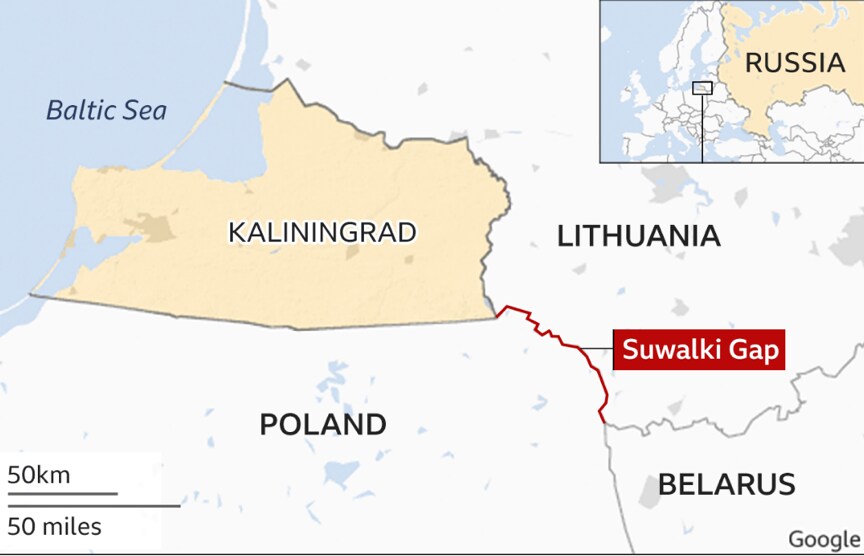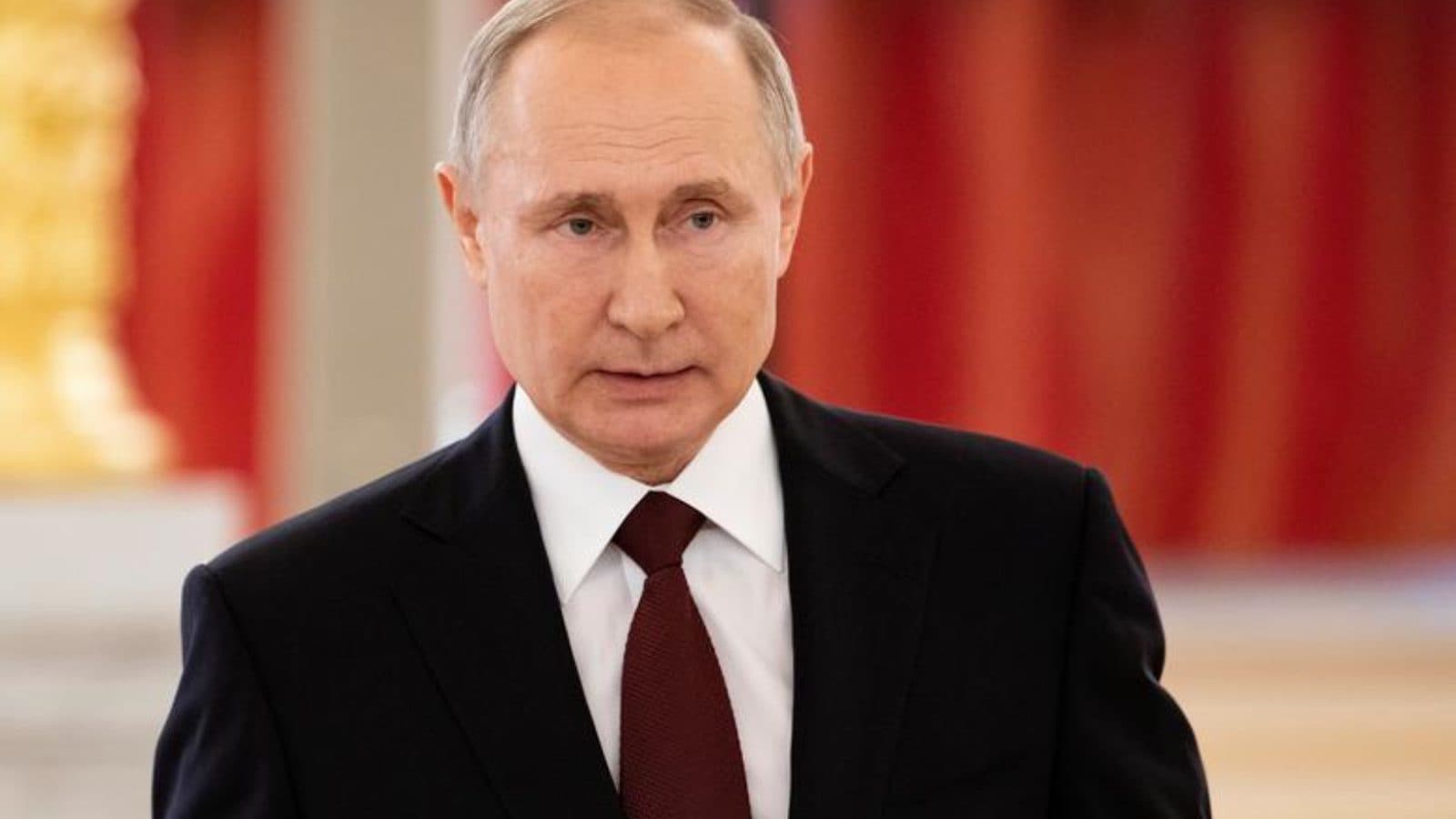Why Kaliningrad Could Soon Become Ground-Zero For a Russia-NATO War
Russia is making gains in Eastern Ukraine, or what is known as the Donbas region. The war in Ukraine is entering a decisive phase. Everyone has one question on their mind: what next? What does Russian President Vladimir Putin intend to do after Russian forces establish control over Donbas? Will they attempt to retake Kyiv and topple the Ukrainian regime led by Volodymyr Zelensky once again? Or will Russia declare a ceasefire, annex Donbas and call it a day after having permanently made Ukraine a landlocked country by cutting its links to the Black Sea?
That would have perhaps been the case had the Kaliningrad front not been opened by NATO. Now, what is Kaliningrad? This territory is Russia’s gate into the Baltic Sea. It is a Russian territory outside the Russian mainland. The best way to describe it would be to call the 223 km² territory a Russian ‘exclave’. Kaliningrad borders NATO members Poland and Lithuania. Essentially, Kaliningrad is Russian territory surrounded by NATO. That has always been a big cause of concern for Moscow.
Now, Lithuania has blocked rail transit from Russia and Belarus into Kaliningrad, and Moscow is furious. Lithuania has claimed that it has blocked the transit of Russian goods sanctioned by Europe to pass through its territory. The sanctioned products barred from being exported to Russian territory by the European Union include construction machinery, machine tools and other industrial equipment. Regional governor Anton Alikhanov said the ban would cover around 50 per cent of the items that Kaliningrad imports.
The Russian exclave, which is said to house close to one million people depends extensively on imports from both Russia as well as Europe. Therefore, for Lithuania to block the rail route to this territory is being seen as an ‘unprecedented’ escalation by Moscow. Kremlin spokesman Dmitry Peskov said the move was unprecedented and that Russia considered it illegal. He remarked, “It is part of a blockade, of course.”
Nikolai Patrushev, secretary of the Security Council of the Russian Federation and a close aide of Vladimir Putin went to the extent of saying, “Russia will certainly respond to such hostile actions. Measures are being worked out in an interdepartmental format and will be taken in the near future. Their consequences will have a serious negative impact on the Lithuanian population.”
Kaliningrad: The Next Flashpoint?
Kaliningrad is of prime strategic importance to Russia. Not only is it Russia’s gateway to the Baltic Sea, but is also the headquarters of the Russian Baltic Fleet. Kaliningrad also houses Russian combat forces, advanced air defenses and the mobile nuclear-capable Iskander-M missiles. To top it all, Russia has reportedly deployed its nuclear assets in the exclave.
And then, the exclave’s population of close to 1 million makes the territory crucial for Russia. Kaliningrad has many industries, and is one of the wealthier regions of Russia. More importantly, Kaliningrad serves as a warm water port for Russia round the year, which means Russia’s shipping operations in and out of the exclave do not get hindered due to harsh winters.
Also Read: NEWS18 EXPLAINS – Why Russia-Lithuania Tensions Are Rising
Lithuania banning the transfer of goods to Kaliningrad, therefore, poses a national security risk to Russia. Although Russia can still ship goods using the sea route from St. Petersburg, across the Gulf of Finland and the Baltic Sea into Kaliningrad, Moscow has not taken the European Union and NATO’s strongarming lightly.
Here’s Some Perspective
Consider this: Alaska is an American territory. There is no question about this fact. Its population is that of around 7 lakh people. Yes, the vast American state called Alaska effectively houses lesser people than the population of Kaliningrad. Now, in a hypothetical scenario, if the United State’s transit routes to Alaska were to be blockaded by any country, or if Russia were to pose a national security risk to Alaska of the kind that is being posed to Kaliningrad, how would Washington respond? Mind you, the United States has a long history of taking reckless and often devastating decisions when its national security ‘appears’ to be under threat.
What are Russia’s Options?
Lithuania is in for some big trouble. Vilnius has claimed that in banning the rail transit route to Kaliningrad, it has complied with EU sanctions against Russia. That gives Russia all the more reason to ‘punish’ Europe as a whole.
The ‘Suwalki Corridor’ is a 65-kilometre (40-mile) strip of land in Poland along the border with Lithuania. This corridor has highway and rail connections that can be used by Russia to drive goods into Kaliningrad via Belarus. To take control of this corridor, however, Russia would need to use its armed forces. That would mean Russia would be effectively waging a war against both Poland as well as Lithuania – both NATO member states.

Under Article 5 of NATO, which views an attack against one of the member states as an attack on all, the United States and its allies would be forced to respond to Russia. Already, US state department spokesman Ned Price said the U.S. was standing by Lithuania, adding that the country’s commitment to NATO’s Article 5 was “iron clad”.
Russia is reportedly considering its options. A response from Moscow is imminent. Given the fact that the Kremlin is already saying that the people of Lithuania are about to suffer, it does not take a genius guess to realise that military operations are very much on the table. Unlike in Ukraine, which is not a NATO member, any move by Russia to establish a land bridge between Belarus and Kaliningrad will risk direct war with NATO.
Again, Lithuania seems to have acted at the behest of the European Union and NATO. Poking Russia with the Kaliningrad card was completely unnecessary. Now, Kaliningrad promises to become ground zero for a direct war between Russia and NATO.
Read all the Latest News , Breaking News , watch Top Videos and Live TV here.
For all the latest world News Click Here

